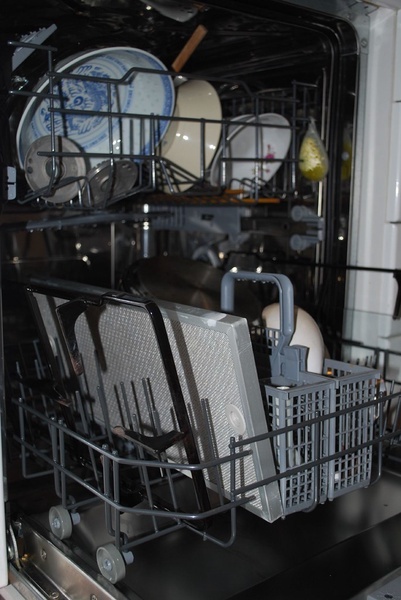
creativecommons.org
When buying a dishwasher, many people often ask themselves: what options should a good device have? Undoubtedly, one of the most important design features in a dishwasher is the heat exchanger. Heat exchangers have recently appeared in dishwashers. After the introduction of this function into the production of washing machines, the productivity of equipment and the efficiency of washing dishes have increased significantly. The heat exchanger allows not only to reduce water consumption, but also electricity, which will provide significant budget savings. What is a heat exchanger?
A heat exchanger is a container that has flat and wide dimensions and resembles a flask in appearance. The heat exchanger is built into the dishwasher. The device is adjacent to the washing block. The heat exchanger bowl contains cold water, which enters there as soon as the washing process starts. The water is preheated by a heating element. Then, during the washing process, water enters the heat exchanger bowl along the inner walls. Thus, the water in the bowl is heated from the incoming heat without consuming electricity.
The heat exchanger performs an accumulative function, as it uses the already accumulated heat, with the help of which water is heated for washing. We can say that the savings are almost doubled, since thanks to the heat exchanger, the accumulated heat can be used twice.
At the end of washing dishes, water from the heat exchanger is supplied for rinsing. If, as a result of one cycle, the sensors determine that the dishes should be washed again, then the accumulated water enters the new washing cycle. One can only dream of such savings! Fortunately, this is a reality that almost every dishwasher model is equipped with.

creativecommons.org
What functions does the heat exchanger perform in the dishwasher: principle of operation, overview and characteristics, advantages
In this section, we will consider in more detail the principle of operation of the heat exchanger and its functions, as well as the benefits of use.
As already mentioned, the heat exchanger is a special part that improves the energy efficiency of the device. This is its main function.
In addition, the heat exchanger allows you to reduce the temperature of the water, preventing the dishwasher from overheating.
Another important function that the heat exchanger performs is to protect pipes from excessively hot water. Consider step by step how the mechanism of the heat exchanger works:
- Water is poured into a special container of the machine.
- The heating element heats the water.
- Dishes are being washed.
- Already heated water falls to the bottom, providing heat transfer.
- Next, the water enters a special tank, and then, under the action of the pump, back into the tank. This happens several times depending on the washing mode.
- Thus, the heat exchanger manages to accumulate a decent amount of heat in just one washing cycle.
Advantages of the heat exchanger:
- During the washing process, the water cools down slowly enough, which allows you to wash dishes made of fragile materials.
- Thanks to this mechanism, there is a more careful attitude to the elements of the dishwasher during operation due to smooth temperature changes.
- The heat exchanger perfectly "supports" the drying function. The condensate accumulated at the bottom ensures dry dishes and no streaks. Thus, the dishes dry twice as fast.
In conclusion, we can say that dishwashers with a heat exchanger are much more durable and economical to use than ordinary models. These criteria are decisive when buying household appliances.


